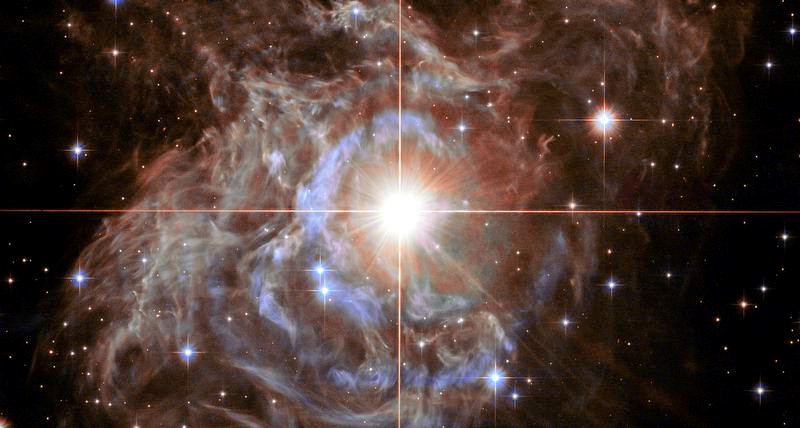Description

Source: HINDU
Disclaimer: Copyright infringement not intended.
Context
- The expansion rate of the universe, often referred to as the Hubble constant (H₀), has been a subject of intense study and debate in cosmology.
- Two primary methods have been used to measure this constant, leading to different estimates and creating what's known as the Hubble tension.
Details
Background
- Hubble Tension:
- The Hubble tension arises from two equally valid methods of measuring the expansion rate of the universe, both yielding significantly different results.
- Despite repeated measurements and refinements in calculations, the tension persists, indicating a real discrepancy rather than a flaw in the data.
- Lambda Cold Dark Matter Model:
- The model is currently the standard cosmological model used to explain various features of the universe, including its expansion.
- However, the Hubble tension suggests that the model may be incomplete or incorrect in some aspects, prompting cosmologists to search for alternative models.
Types of Universes
- The universe can have different geometric shapes based on its curvature: open, closed, or flat.
- An open universe continues expanding indefinitely, a closed universe eventually collapses due to gravitational forces, and a flat universe maintains a constant expansion rate over time.
Observational Techniques
- Cosmologists use two main methods to measure the expansion rate:
- Cosmic Microwave Background (CMB): Studies of the CMB, the afterglow of the Big Bang, provide one estimate of the expansion rate.
- Cosmic Distance Ladder: This method involves measuring the distances to celestial objects, such as Cepheid variable stars, to estimate the expansion rate.
- Measurements and Estimates:
- Studies based on the CMB suggest an expansion rate of around 68 kilometers per second per megaparsec ((km/s)/Mpc).
- Measurements using the cosmic distance ladder, particularly Cepheid variable stars, yield a higher estimate of around 73 (km/s)/Mpc.

Recent Findings
- Researchers have utilized advanced telescopes like the James Webb Space Telescope (JWST) to study Cepheid variable stars and validate previous measurements.
- Studies comparing data from the Hubble Space Telescope and JWST found no significant difference in estimates of the stars' distances, reinforcing the reality of the Hubble tension.
Implications
- The existence of the Hubble tension suggests the need for a deeper understanding of the universe's expansion and potentially a revision of current cosmological models.
- Continued research aims to identify the underlying causes of the tension, which could lead to new insights into the fundamental nature of the cosmos.
About Cosmic Expansion
- The concept of the universe expanding was first proposed by Belgian astronomer Georges Lemaître in the 1920s and later supported by Edwin Hubble's observations.
- The expansion of the universe refers to the increasing distance between galaxies over time, leading to the stretching of space itself.
Evidence for Cosmic Expansion:
- Hubble's Law: The observation that galaxies are receding from us, with their redshift proportional to their distance, indicates universal expansion.
- Cosmic Microwave Background (CMB): An echo of the Big Bang, the CMB radiation is uniformly distributed and provides evidence of the universe's early hot and dense state.
- Large-Scale Structure: Observations of the distribution of galaxies and galaxy clusters show a web-like structure, consistent with an expanding universe.
Understanding the Expansion:
- Metric Expansion: The fabric of space itself expands, carrying galaxies away from each other. It's not galaxies moving through space, but rather space itself stretching.
- Hubble Constant: Represents the rate of expansion of the universe, indicating how quickly galaxies are moving away from each other.
- Dark Energy: The mysterious force driving the acceleration of cosmic expansion, counteracting gravity and pushing galaxies apart.
The Fate of the Universe:
- Critical Density: The balance between the expansion rate and gravitational pull determines whether the universe will expand forever or eventually collapse.
- Open, Closed, and Flat Universes: Depending on the density of matter and energy, the universe could be open (expanding forever), closed (eventually collapsing), or flat (balancing expansion and gravity).
- Current Understanding: Current observations suggest a flat universe dominated by dark energy, leading to an accelerated expansion.
Sources:
HINDU
|
PRACTICE QUESTION
Q. Discuss the Hubble tension and its implications for our understanding of the expansion of the universe. How do different methods of measuring the expansion rate contribute to this tension? (250 Words)
|










